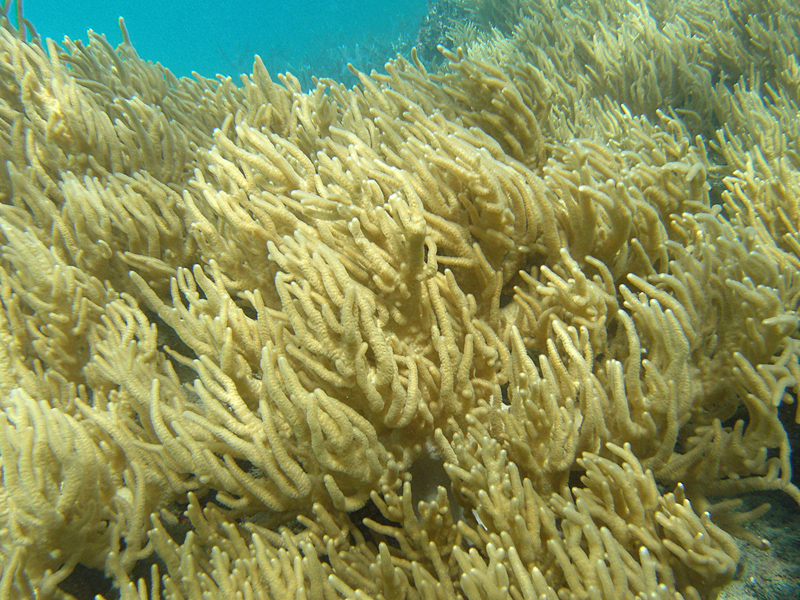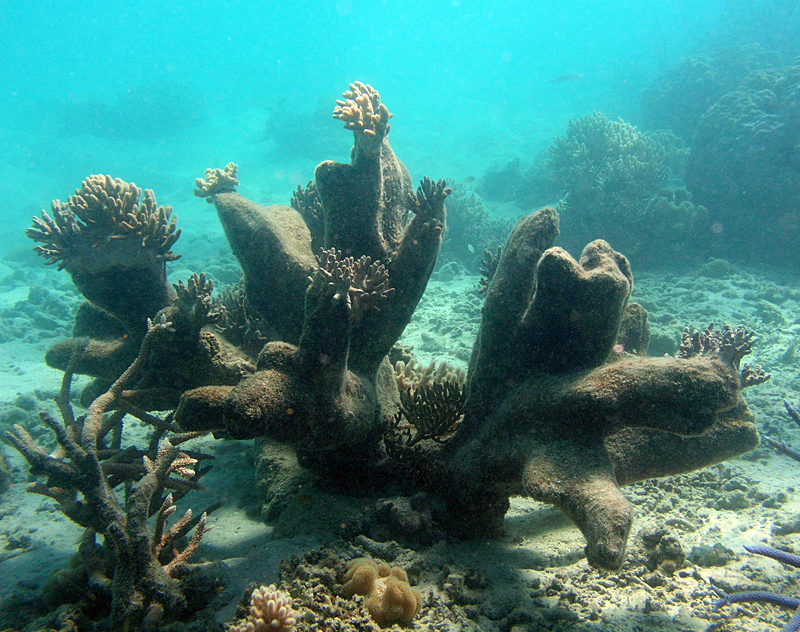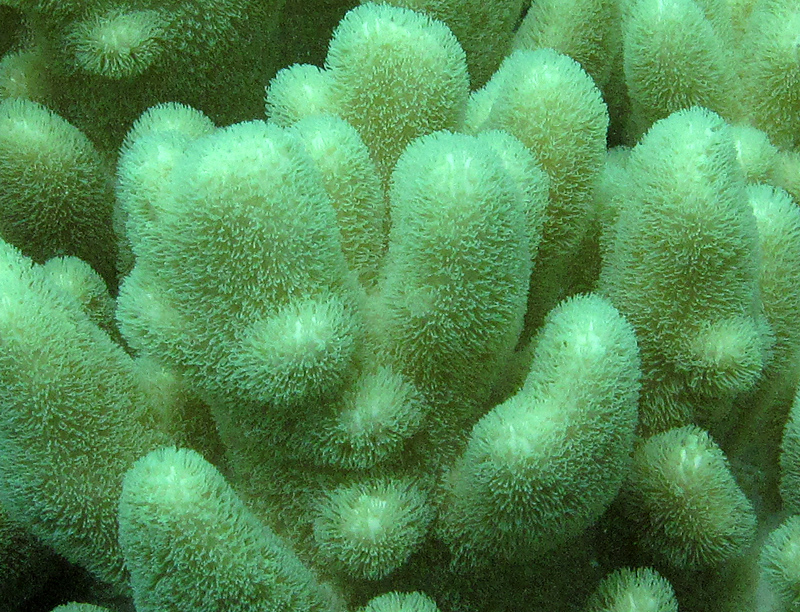
©Andy Lewis: A large stand of Sclerophytum sp. at the Horseshoe Reef showing a long delicately brached morphology with polyps extended.

©Andy Lewis: A colony of Sinularia sp. that has deposited a large base of spiculite. Specimen from the lagoon near palfrey island.

©Andy Lewis: A short-branched colony of Sinularia sp. with polyps extended. Specimen from the lagoon near south island.
Colours
Distinguishing features
A soft coral with a short bare stalk and an extensively branched upper surface. There is considerable morphological variation in this species, with branches ranging from thin and sinuous strands to short compact knobs. There is only one type of polyp however, and this feature can be used to distinguish this genus from Sarcophytonold and Lobophytum sp.. The colonies have a distinct "hairy" appearance when polyps are extended. Colonies may be up to 1.5m in diameter, however they can form large monospecific stands of multiple colonies that can be up to 7 meters across. In some cases, sclerites can fuse to form a solid base of spiculite, with the living colony perched on top.
There are about 150 species of Sinularia in the Indo-Pacific, and most cannot be identified on the basis of external morphological features, requiring instead a microscopic examination of sclerites. A recent molecular analysis (McFadden et al. 2009) produced 5 major clades which are not congruent with previous morphological groupings, however these authors did produce a key for allocating Sinularia sp. to molecular clades.
Size
- Size data has not been obtained.
Synonyms
Distribution
Distribution and habitat preferences
Sheltered back reef and lagoonal habitats.
Can be found in most reef habitats around Lizard Island.
Behaviour
Sinularia sp. is well known for its high concentrations of toxic organic compounds including terpenes and cembranes, which deter predators and also inhibit settlement and competition from other benthic organisms. The egg cowrie (Ovula ovum) and several butterflyfish species (Chaetodon melannotus) are known to feed on this coral however.
The coral can reproduce in a number of ways, including fragmentation, polyp brooding and external spawning. At Lizard Island, the species is gonochoric, with separate male and female colonies in approximately equal numbers. Broadcast spawning takes place after the full moon in November during the reef-wide mass spawning event, however small numbers of gametes are also released after full moons from August to February.
Growth is slow, about 5mm per year, and large stands over 10m could well be more than a century old.
Web resources
References
References that assist with identification
- McFadden, C.S., P. Alderslade, L.P. van Ofwegen, H. Johnsen and A. Rusmevichientong (2006). Phylogenetic relationships within the tropical soft coral genera Sarcophyton and Lobophytum (Anthozoa, Octocorallia), Invertebrate Biology, 125: 288-305.
Other references
- Bastidas, C., J. A. H. Benzie, S. Uthicke and K. E. Fabricius (2001). Genetic differentiation among populations of a broadcast spawning soft coral, Sinularia flexibilis, on the Great Barrier Reef, Marine Biology, 138(3): 517-525.
- Bastidas, C., K. E. Fabricius and B. L. Willis (2004). Demographic aspects of the soft coral Sinularia flexibilis leading to local dominance on coral reefs, Hydrobiologia, 530-531(1-3): 433-441.
- View all references




